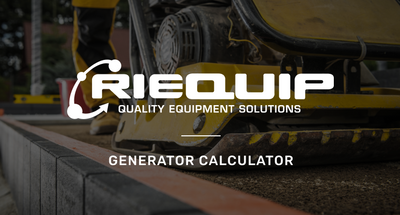Petrol-Powered Water Pumps: Everything You Need To Know
Petrol-powered water pumps offer vital water transfer capabilities to various industries, enabling irrigation for farmers, water transfer for construction, and emergency situations such as floods.
This article will have everything you need to know about these water pumps, from function, to usage, to operation, to maintenance. Read on to learn about the utility and versatility of these machines.
Understanding Petrol-Powered Water Pumps
These pumps are designed to efficiently move large quantities of water from one location to another using the power of a petrol engine. These pumps typically consist said petrol engine, a pump mechanism, and an intake and discharge port for water flow.
The petrol engine serves as the primary power source for the water pump, providing the necessary energy to drive the pump mechanism. This mechanism typically consists of an impeller or piston-driven system that creates suction to draw water into the pump and then pressurises it to propel it through the discharge port.
One of the key components of a petrol-powered water pump is the impeller, which rotates at high speeds within the pump housing, creating centrifugal force that forces water outwards and into the discharge port. This process allows the pump to move water efficiently over long distances or to higher elevations.
Petrol-powered water pumps come in various sizes and configurations to suit different applications, from small portable pumps for domestic use to large, high-capacity pumps for industrial or agricultural purposes. Understanding the components and operation of these pumps is essential for maximising their utility in various tasks and environments.
Applications of Petrol-Powered Water Pumps
There are many applications for petrol-powered water pumps. In many situations having one of these pumps drastically reduces your workload, or even negates it entirely. Let’s have a look at some situations where a petrol-powered pump shines:
Irrigation
In agricultural irrigation, petrol-powered water pumps play a crucial role in maximising crop yield and minimising water wastage. These pumps can be connected to sprinkler systems, drip irrigation lines, or flood irrigation channels, depending on the specific needs of the crops and the terrain of the farmland.
Construction
In construction applications, petrol-powered water pumps are often deployed to address temporary water accumulation caused by rain, groundwater seepage, or accidental flooding. They can also aid in the construction of water fixtures. These pumps are capable of handling large volumes of water quickly, allowing construction activities to proceed smoothly and safely.
Emergency Water Supply
During emergencies, petrol-powered water pumps provide a lifeline for communities facing water scarcity or contamination. These pumps can be quickly deployed to establish temporary water distribution points or to replenish water storage tanks and reservoirs.
Flooding
During flood events, petrol-powered water pumps play a critical role in protecting lives and property by facilitating the rapid removal of floodwater. These pumps can be operated in both stationary and portable configurations, allowing emergency responders and homeowners to address flooding in various settings.
Operating a Petrol-Powered Water Pump
Operating a petrol-powered water pump requires careful attention to safety procedures and proper handling techniques to ensure efficient performance and prevent accidents. While some models may have their specific considerations, here's a step-by-step guide to general operation of a petrol-powered water pump:- Preparation
- Before starting the water pump, ensure that it is placed on a stable and level surface to prevent tipping or movement during operation.
- Check the fuel level in the petrol tank and top it up if necessary. Use the appropriate type of fuel recommended by the manufacturer to avoid engine damage.
- Inspect the pump's intake and discharge hoses for any signs of damage, blockages, or leaks. Replace or repair any faulty components before proceeding.
- Prime the Pump
- Priming the pump is essential to create suction and initiate the flow of water. Follow the manufacturer's instructions to prime the pump properly.
- Submerge the pump's intake hose in the water source, ensuring that it is fully immersed to prevent air from entering the system.
- Open the pump's air release valve or priming port and pour water into the pump housing until it is filled to capacity. Close the valve securely once priming is complete.
- Start the Engine
- Engage the choke lever or switch to the "choke" position to enrich the fuel-air mixture for easier starting, especially if the engine is cold.
- Pull the starter cord or activate the electric starter to crank the engine. Once the engine starts, gradually move the choke lever to the "run" position to allow normal operation.
- Allow the engine to warm up for a few minutes before engaging the pump to ensure optimal performance and fuel efficiency.
- Engage the Pump
- Once the engine is running smoothly, engage the pump by activating the pump's clutch or switch. This will initiate the pumping action and start drawing water from the source.
- Monitor the pump's performance closely, ensuring that water is being discharged properly and that there are no leaks or abnormalities in the system.
- Adjust the throttle control to regulate the engine speed and pump output according to the desired flow rate and pressure requirements.
- Monitor Operation
- While the pump is running, periodically check the engine and pump components for signs of overheating, unusual noises, or vibrations. Address any issues promptly to prevent equipment damage or failure.
- Keep an eye on the fuel level and refill the petrol tank as needed to ensure uninterrupted operation.
- Maintain a safe distance from the pump and rotating components to avoid injury, and never touch hot surfaces or moving parts while the pump is in operation.
- Shutdown Procedure
- When finished using the water pump, disengage the pump's clutch or switch to stop the pumping action.
- Allow the engine to idle for a few minutes to cool down before shutting it off completely.
- Turn off the ignition switch or key to cut off the fuel supply and stop the engine.
- Disconnect the pump's intake and discharge hoses and drain any remaining water from the system to prevent freezing or damage during storage.
Maintenance and Care
Proper maintenance and care for your water pump is essential to ensuring longevity and optimal performance. It is important to follow the manufacturer’s recommendations for maintenance and care, but here are some general maintenance tasks to keep your pump in top condition:- Regular Inspections
- Perform visual inspections of the pump and engine components before and after each use. Look for signs of wear, damage, or leaks in hoses, fittings, seals, and gaskets.
- Check the engine oil level regularly and top it up as needed to ensure proper lubrication and cooling of the engine components
- Oil Changes
- Follow the manufacturer's recommendations for oil change intervals and use the recommended type and grade of engine oil.
- Change the engine oil at regular intervals or after a specified number of hours of operation to remove contaminants and maintain optimal engine performance.
- Air Filter Maintenance
- Clean or replace the air filter regularly to prevent dust, dirt, and debris from entering the engine and causing damage.
- Inspect the air filter for clogging or damage and clean or replace it as needed to ensure adequate airflow to the engine.
- Fuel System Care
- Use clean and fresh fuel to prevent fuel system contamination and engine performance issues.
- Drain and replace the fuel in the petrol tank if it becomes contaminated or if the pump will be stored for an extended period.
- Cooling System Maintenance
- Check the engine cooling system regularly for proper coolant levels and top up the coolant reservoir as needed.
- Inspect the radiator and cooling fins for debris or blockages and clean them with compressed air or a soft brush to ensure efficient heat dissipation.
- Storage Procedures
- Store the water pump in a dry and well-ventilated area away from direct sunlight, moisture, and corrosive materials.
- Drain the fuel from the petrol tank and run the engine until it stalls to prevent fuel from evaporating and leaving residue in the fuel system.
- Cover the pump with a protective tarp or cover to shield it from dust, dirt, and debris during storage.
Final Thoughts
Petrol-powered water pumps are indispensable tools for various jobs and purposes, offering reliable water transfer anywhere it’s needed. Understanding their operation, diverse applications, and maintenance procedures is crucial for maximising their utility.By following the guidelines outlined in this article, you can confidently tackle a wide range of pumping tasks with ease. If you’re in the market for a petrol-powered water pump, check out our selection at Riequip. Tested before shipping and with warranty, browse now!


